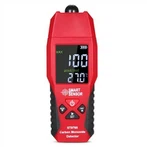Can the diode setting of a multimeter light up the diode?
There is a diode setting on the multimeter that can be used to detect diodes and light them up. But lighting is not absolute, mainly for two reasons:
1) The diode range of the multimeter has a low voltage;
2) The working voltage of light-emitting diodes is relatively high.
The voltage of the diode scale of the multimeter is generally around 3V. This voltage can light up an ordinary light-emitting diode. When measuring the quality of the diode, you can use the red test lead to touch the positive electrode of the LED, and the black test lead to the negative electrode of the LED. You can judge when the LED lights up. LEDs are good. However, the output voltage of some meters is too low to light the LED or can only light it slightly. I have used a relatively cheap multimeter from Unilid before, but it could not light up the LED. The diode settings were basically useless, which was very inconvenient.
LED is a special diode with forward voltage drop, and this parameter varies greatly. LEDs of different colors have different conduction voltage drops. Generally speaking, the conduction voltage drop of red light-emitting diodes is the smallest, approximately in the range of (1.5-2)V; the green one is second, around (1.8-2.5)V; and the blue voltage drop is the highest, in the range of (2) -3.5)V or so. Therefore, when the same watch measures LEDs of different colors, their brightness is different. Generally, red is the brightest and blue is the darkest. Even some colors cannot be lit.






